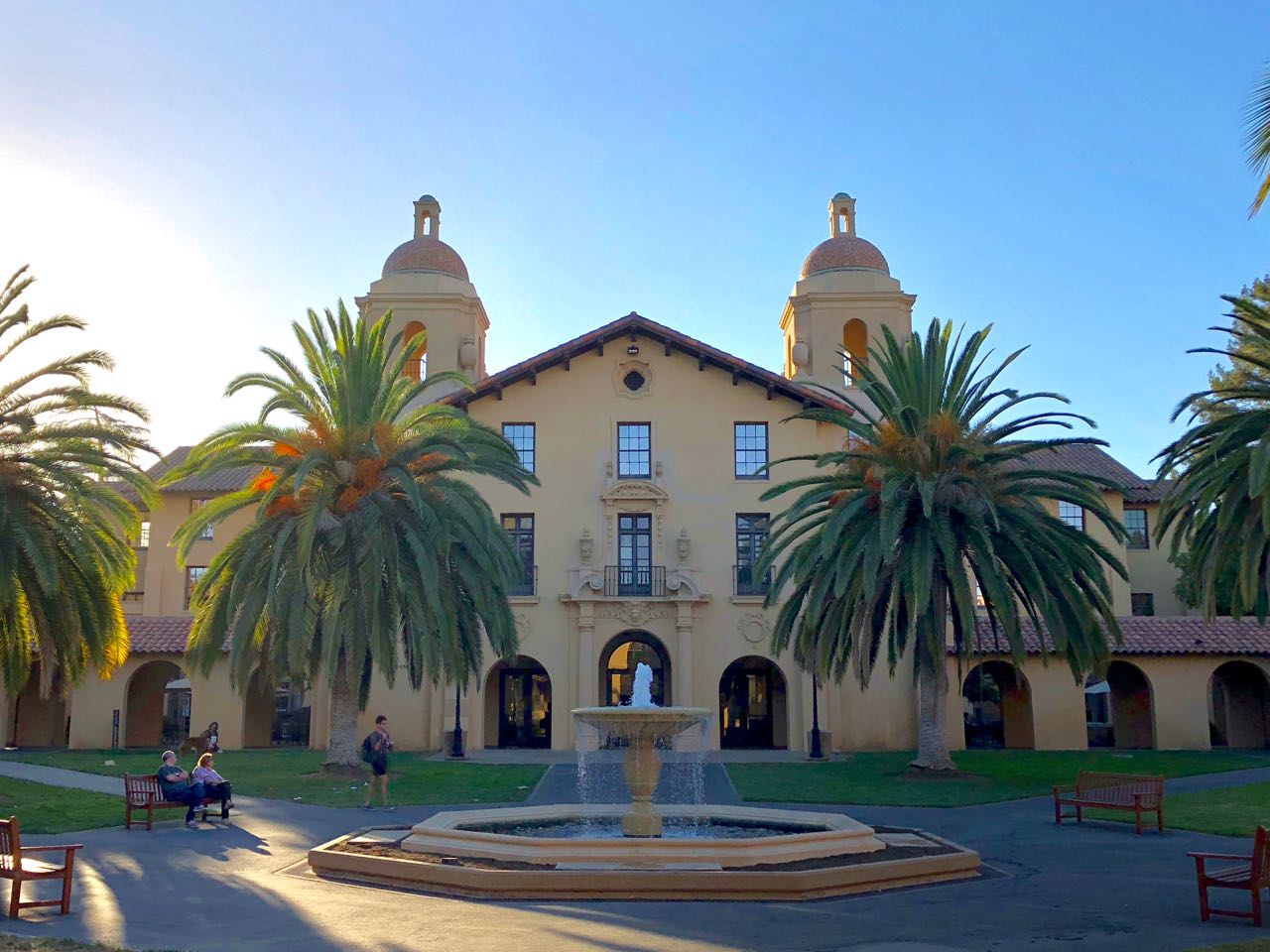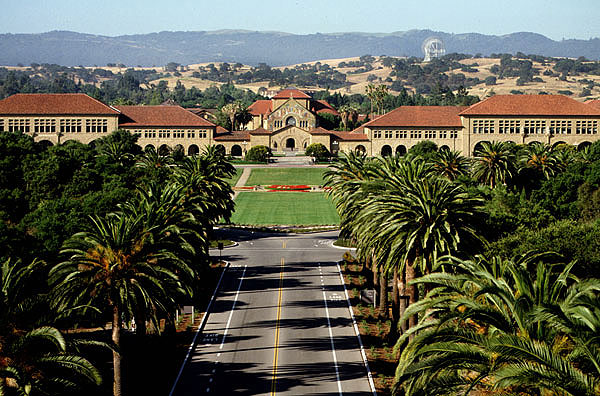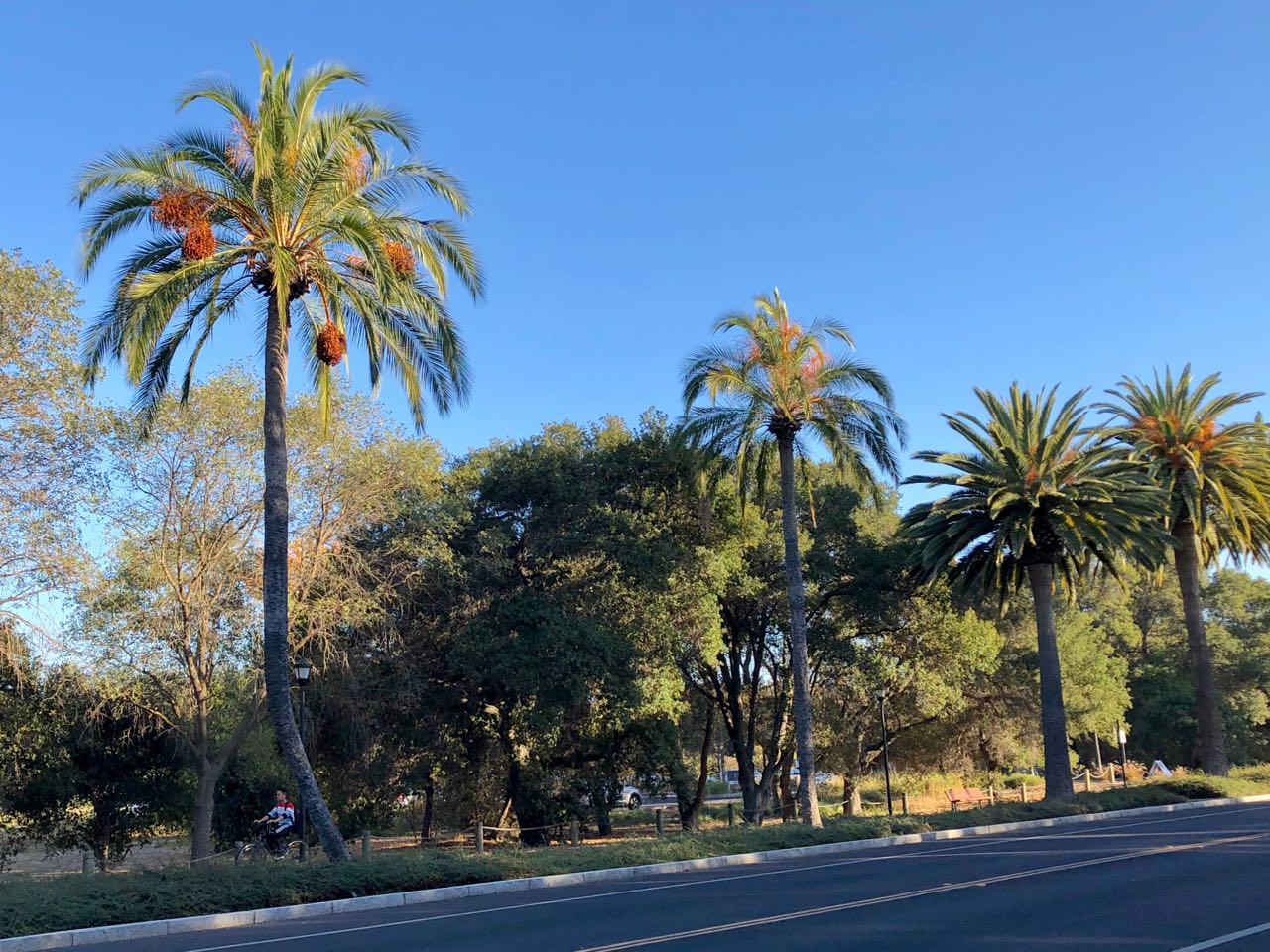Phoenix canariensis
 Canary Island date palm
Canary Island date palm


Yes, Palm Drive is lined almost exclusively with this tree from the Canary Islands (see below for the identity of the outliers). The leaf structure is like that of a feather, rather than being folded like a fan as with Washingtonia, and the leaf stalk is so short as to be hardly noticeable on the tree. Closer examination will reveal a stalk bearing long stout spines. The dates, about ¾ inch long, fall from the female trees but are inedible – well, objectionable to humans. They come in orange bunches. After weathering on the ground, they leave behind piles of characteristically grooved date stones. Comparisons may be made with fan palms in the Inner Quad and also in the environs of the Bookstore.
Palm Drive got its palms in 1893 at the suggestion of university president David Starr Jordan. P. canariensis trees originally alternated with Washingtonia filifera; the fan palms were eliminated by 1922. There are now 166 palms lining the entry road, which includes the outside edges of the Oval. Stanford seems to have kept this number constant for quite some time now.
The sawn-off leaf stubs that give the trunks their characteristic appearance are homes to birds and a variety of seeds that germinate in the collected litter. I noted two live oaks, one Atlas cedar, a blackberry, an ash, and five daughters growing in comfortable pockets of the Canary Island palm between Braun Music Center and Muwekma-tah-ruk (543 Lasuen Mall).
As with pine cones and pineapples, the diamond network on the trunk of the palm is not symmetrical; there are eight columns running down to the left and 13 running more steeply down to the right. This is the phenomenon discussed under Pine Cones and Fibonacci Numbers.
Isolated specimens are abundant, for example at the entrance of Thermosciences (Building 500). Seedlings volunteer freely from date pits disseminated by birds and rodents, and if there is no objection to the site, they have been allowed to live.
It is possible to transplant these palms even when they are very large. In 1981, many gaps that had occurred in Palm Drive were filled with large trees instead of being replaced by young plants. Opportunities were taken to rescue old palms that had become unwanted elsewhere. For example, two 50-foot specimens were transplanted from 532 Channing Avenue, Palo Alto.
Palm Drive’s mystery outliers

Ten palms on Palm Drive are quite clearly not Canary Island date palms. Their slender trunks, sparser canopies, and the considerably longer stalks (peduncles) on their inflorescences give them away as being different. They are thought to be hybrids of P. canariensis and possibly P. rupicola, the cliff date palm from the eastern Himalayas. Closer investigation is needed.
Name derivation: Phoenix – See P. dactylifera entry; canariensis – of the Canary Islands.
About this Entry: The main text of this entry is from the book Trees of Stanford and Environs, by Ronald Bracewell, published 2005. Outlier palms note added Sep 2018 by Sairus Patel (consultant: Jason Dewees). P. dactylifera notes moved to its own entry (Apr 2023, SP). Palm Drive fan palms removal date added, ref. Stanford Daily, Mar 14, 1922 (Oct 2024, SP). Minor edits (Mar 2025, SP).



